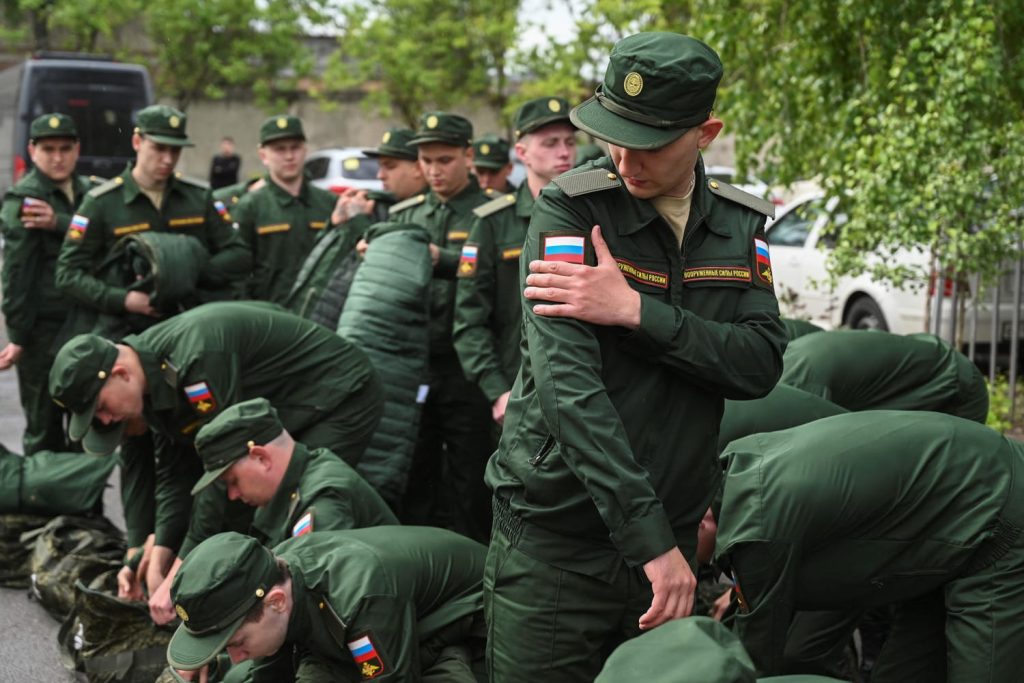Russia maintains a mandatory conscription system as part of its “universal military obligation,” requiring most male citizens aged 18-30 to serve 12 months in the armed forces. This twice-yearly draft (spring and autumn) is separate from contract soldiers or reserves mobilized for the ongoing war in Ukraine, though the lines have blurred amid high casualties. Women are exempt from conscription but can volunteer. The system aims to build a reserve force, but critics argue it’s increasingly used to sustain Russia’s military expansion to 1.5 million active personnel by 2026.
As of September 28, 2025, Russia is preparing for its autumn draft starting October 1, which will conscript 133,000 men—the highest in over a decade when combined with the spring intake. This follows a spring 2025 campaign that drafted 160,000, the largest since 2011. The Defense Ministry insists drafts are unrelated to the Ukraine conflict, but reports indicate many conscripts end up in combat zones after minimal training, despite legal protections.
Key Changes in 2025
- Age Expansion: Draft age raised from 27 to 30 in 2024; by 2025, it applies to ages 20-30 (phasing to 21-30 in 2026). Voluntary service remains open from age 18.
- Electronic Summons: Fully implemented from January 1, 2025, via the Gosuslugi portal and a unified registry. This tracks draft-eligible men (about 10 million) and restricts rights for dodgers after 20 days of ignoring notices: no loans, vehicle registration, property sales, or business startups. Tested in regions like Ryazan and Sakhalin.
- Year-Round Process: A bill passed first reading in September 2025 allows continuous medical exams and commissions from January-December starting 2026, though actual enlistments stay biannual. Decisions are now valid indefinitely—if skipped in one cycle, you’re called in the next.
- Exemptions Tightened: Government targets reducing health-based exemptions from 19% in 2024 to 17.5% by 2030. Only full unfitness qualifies; partial fitness may lead to service.
- Occupied Territories: Drafts now include Ukrainian regions under Russian control, issuing passports to force enlistment.
Draft Quotas: Historical Comparison
| Year/Season | Quota | Notes |
|---|---|---|
| Spring 2022 | 134,500 | Pre-invasion baseline. |
| Fall 2022 | 300,000+ (partial mobilization) | Reserves called for Ukraine; sparked mass exodus (261,000+ fled). |
| Spring 2023 | 147,000 | Post-mobilization ramp-up. |
| Fall 2023 | 130,000 | Steady amid recruitment drives. |
| Spring 2024 | 150,000 | Age limit raised to 30. |
| Fall 2024 | 133,000 | Electronic system piloted. |
| Spring 2025 | 160,000 | Largest since 2011; tied to military expansion. |
| Fall 2025 | 133,000 | Ongoing; raids intensified in Moscow and regions. |
Total 2025: ~293,000 conscripts, plus 100,000+ contracts.
Partial Mobilization Context
The last major “partial mobilization” was in September 2022, calling 300,000 reserves with prior training. It was chaotic: inadequate equipment, rushed training, and high casualties led to protests and emigration. No full-scale repeat has occurred, but rumors of another wave persist annually, fueled by Russia’s 100,000+ verified deaths in Ukraine (likely double). Instead, Moscow relies on:
- High-signup bonuses (up to regional budgets’ strain).
- Recruiting prisoners, migrants, and North Koreans (3,000+ sent in 2025).
- “Covert” tactics like raids (170 detentions in Fall 2024, double from 2023).
Budget: 2025 defense spending hits €165 billion (41% of total), including €136 million for a mobilization reserve and veteran funds.
Evasion and Public Sentiment
Draft dodging is a felony (up to 26 months prison or fines). Common methods: faking illnesses, hiding, fleeing abroad, or alternative civilian service (rare, e.g., for religious reasons). Employment discrimination persists despite bans. On X, recent posts (September 2025) show fear and mockery: users discuss “suicide missions” for conscripts, compare to historical drafts, and highlight Ukraine’s parallel struggles. Protests are minimal due to crackdowns, but human rights groups report intensified raids.
Implications for the Ukraine War
While conscripts legally can’t fight abroad until after four months’ training, violations are common—95% reportedly sent to fronts within a week in some cases. This sustains Russia’s offensives but risks domestic backlash, as seen in 2022. With NATO eyeing escalation and peace talks stalled, the draft signals no de-escalation.
This is based on public reports; the situation evolves rapidly. Not financial or legal advice—consult official sources for personal impacts.
